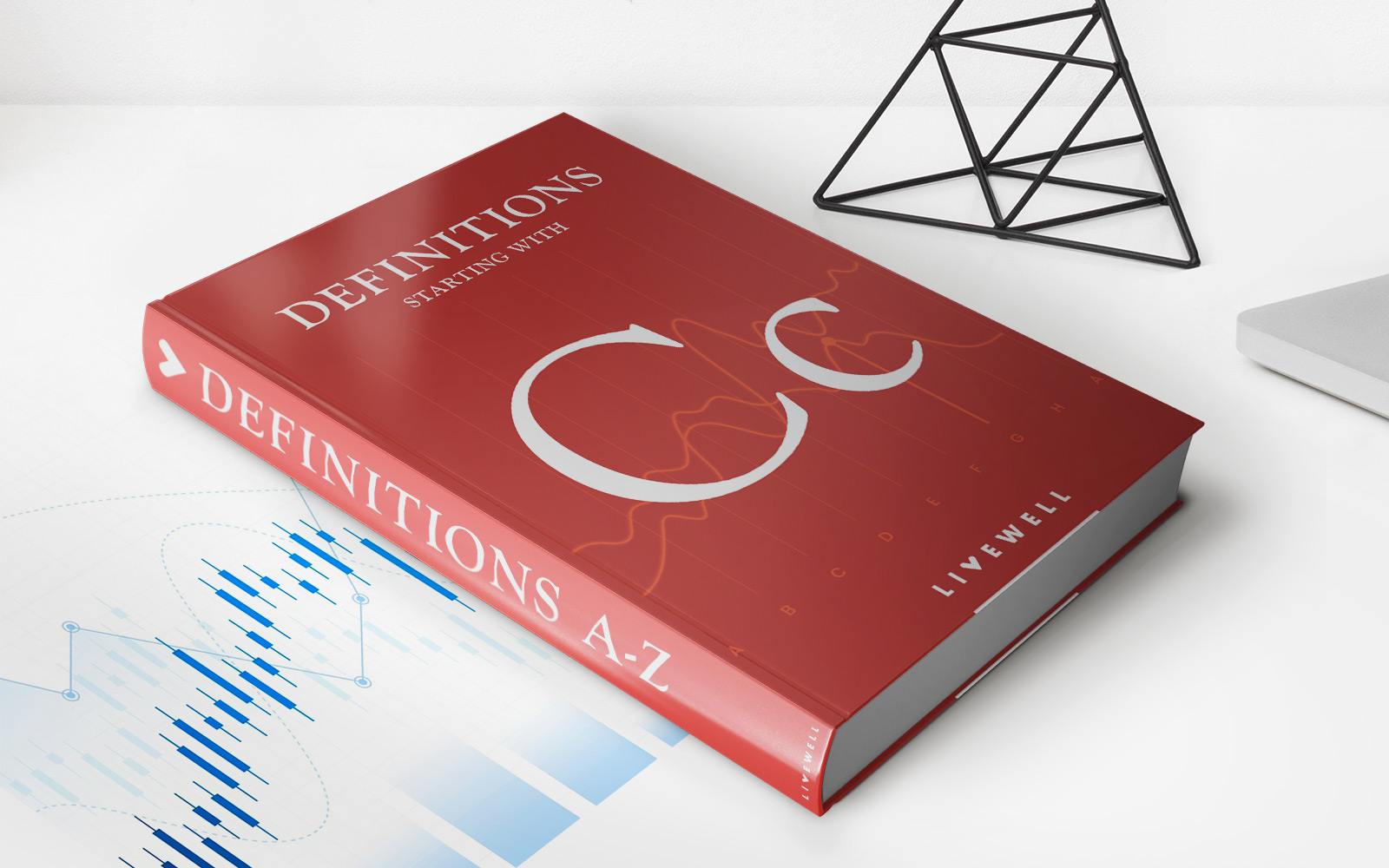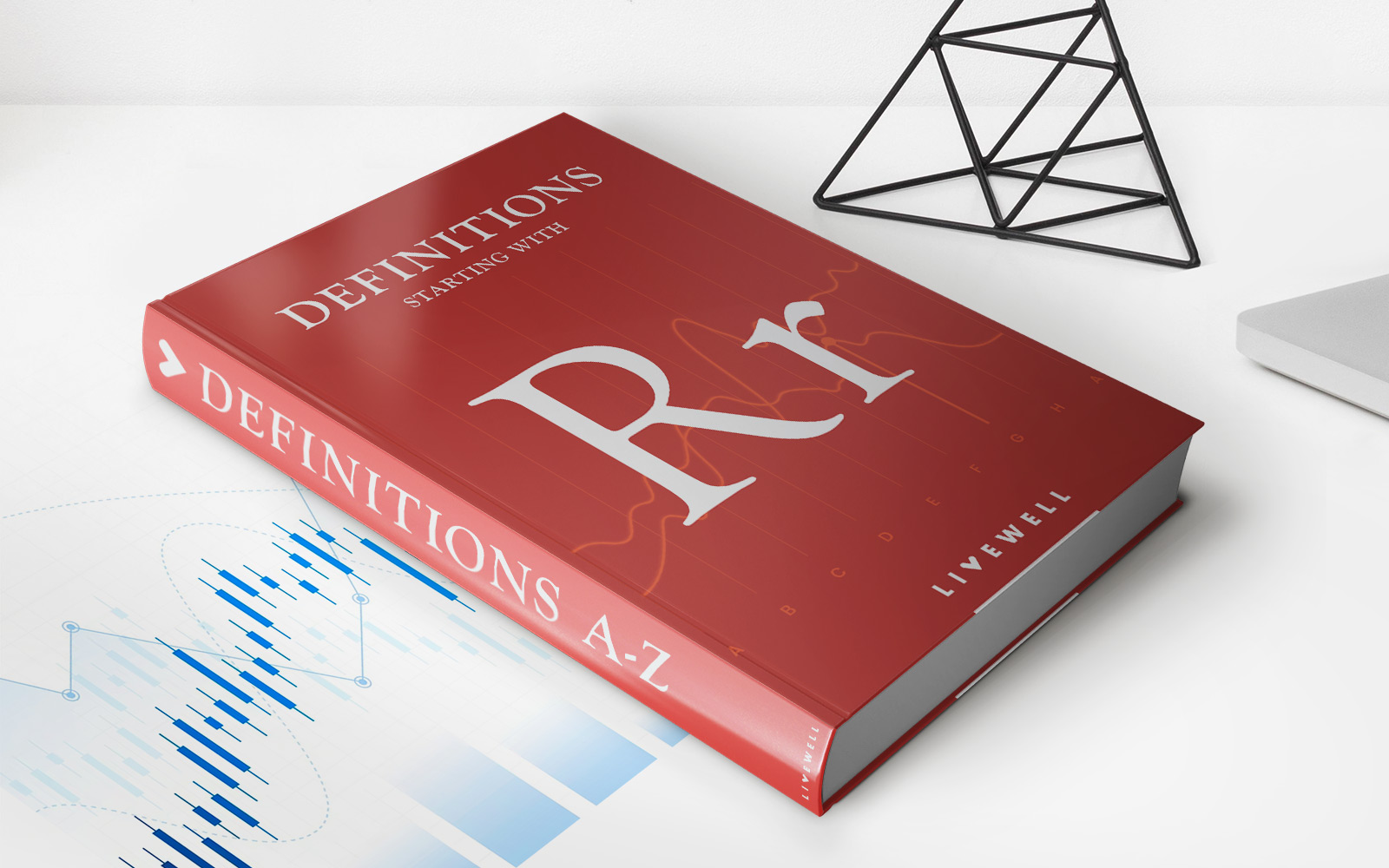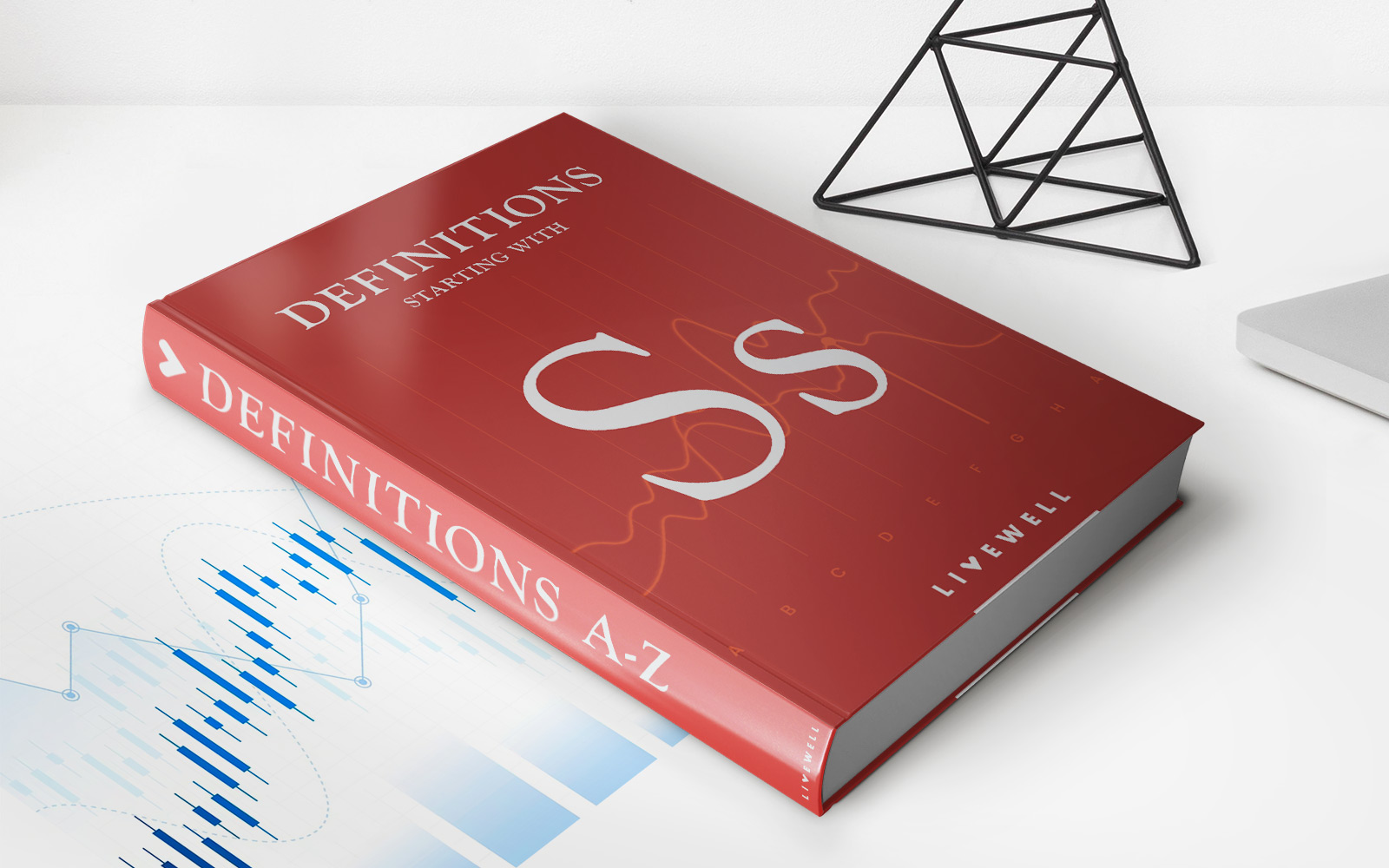Home>Finance>What Is Less Depreciation On An Insurance Claim?


Finance
What Is Less Depreciation On An Insurance Claim?
Published: November 15, 2023
Understand the concept of less depreciation on insurance claims in the realm of finance. Learn how it can affect your reimbursement and financial standing.
(Many of the links in this article redirect to a specific reviewed product. Your purchase of these products through affiliate links helps to generate commission for LiveWell, at no extra cost. Learn more)
Table of Contents
- Introduction
- What is Depreciation?
- How Does Depreciation Work in Insurance Claims?
- Understanding the Concept of Less Depreciation
- Factors Affecting Less Depreciation on an Insurance Claim
- Benefits of Less Depreciation on an Insurance Claim
- How to Maximize Less Depreciation on an Insurance Claim
- Common Misconceptions about Less Depreciation on an Insurance Claim
- Conclusion
Introduction
Welcome to the world of insurance claims, where understanding the intricacies of terminology is crucial in ensuring that you receive the maximum amount of coverage for your losses. One such term that often comes up during the claims process is “less depreciation.” But what exactly does it mean?
Imagine this scenario: You file an insurance claim for damage to your home or vehicle. The insurance company assesses the value of the property before the damage occurred and determines the amount they will pay you for the repairs or replacement. However, they also take into account the concept of depreciation.
Depreciation is the decrease in value of an asset over time, due to factors such as wear and tear, age, and obsolescence. In the context of insurance claims, depreciation is calculated based on the estimate of the item’s lifespan and the wear and tear it has experienced up until the time of the incident.
This is where “less depreciation” comes into play. It refers to the portion of the claim settlement amount that is reduced to account for the depreciation of the damaged property. In simpler terms, it is the amount that the insurance company deducts from the claim payout as a result of the property’s decreased value due to depreciation.
Understanding less depreciation is essential because it directly affects the reimbursement you receive for your loss. The higher the depreciation percentage applied by the insurance company, the lower the amount you will receive.
In the following sections, we will delve deeper into how depreciation works in insurance claims, factors that influence the calculation of less depreciation, and strategies to maximize your claim payout.
So, let’s explore this concept further and equip ourselves with the knowledge to navigate the world of insurance claims with confidence.
What is Depreciation?
Before we dive into the specifics of how depreciation works in the realm of insurance claims, let’s first understand what depreciation is and how it affects the value of assets.
Depreciation is a concept commonly used in the fields of finance and accounting to denote the decline in value of an asset over time. It is a natural result of factors such as wear and tear, age, and obsolescence.
When it comes to insurance, depreciation is a crucial factor in determining the claim payout amount. Insurance companies take into account the depreciated value of damaged property when assessing the amount they will reimburse for repairs or replacement.
Depreciation can impact different types of assets, including homes, vehicles, electronics, and other valuable items. For example, a car’s value decreases as it ages, regardless of its condition. Similarly, a television’s value may diminish as new, more advanced models enter the market.
While depreciation is inevitable, understanding its impact on insurance claims is essential. Adjusters consider the original cost of the item, its expected lifespan, and the extent of wear and tear to determine its current value. This calculation helps them arrive at the depreciated value, which then affects the claim settlement amount.
Depreciation is often expressed as a percentage. Typically, insurance companies use industry-standard guidelines to determine the depreciation rate based on the type of property and its age. The higher the depreciation percentage applied, the lower the amount you will receive in your claim settlement.
It is important to note that not all insurance policies factor in depreciation. Some policies offer “replacement cost coverage,” meaning that the insurer will reimburse you for the full cost of replacing the damaged item, without deducting any depreciation. However, these policies often come with higher premiums.
Now that we have a basic understanding of depreciation, let’s explore how it specifically works in the context of insurance claims and the concept of less depreciation.
How Does Depreciation Work in Insurance Claims?
When it comes to insurance claims, depreciation plays a significant role in determining the amount you will receive for repairs or replacement of damaged property. Let’s delve into the specifics of how depreciation works in the context of insurance claims.
When you file an insurance claim for property damage, the insurance company will send an adjuster to assess the extent of the damage and determine the claim payout. The adjuster takes into account the depreciated value of the damaged property to calculate the reimbursement amount.
The specific method used to calculate depreciation may vary depending on the insurance company and the type of asset being assessed. Generally, the insurance company will consider the original cost of the item, its expected lifespan, and the extent of wear and tear it has undergone.
For example, let’s say your vehicle is damaged in an accident, and you file a claim with your auto insurance company. The adjuster will assess the pre-accident value of the car, taking into account factors such as the age of the vehicle, mileage, overall condition, and any previous repairs or damage. They will then determine the current value of the damaged vehicle based on the depreciation percentage assigned by the insurance company.
Once the adjuster has calculated the depreciated value of the damaged property, they will subtract this amount from the total cost of repairs or the replacement value of the item. This deduction is commonly referred to as “less depreciation.”
The remaining amount after deducting depreciation will be the claim settlement that the insurance company will offer you. It is important to note that in some cases, the insurance policy may have a deductible, which is the amount you are responsible for paying toward the repairs or replacement before the insurance coverage kicks in.
It is worth mentioning that not all parts of an asset may be subject to the same depreciation. The adjuster will carefully examine the damaged property to determine which components are affected and to what extent. Parts that are deemed to still have significant value may not be subject to the same depreciation rate as parts that are completely damaged or worn out.
Understanding how depreciation works in insurance claims is crucial as it directly impacts the reimbursement you receive. Now that we have a clearer understanding of depreciation, let’s explore the concept of “less depreciation” and its significance in insurance claims.
Understanding the Concept of Less Depreciation
When dealing with insurance claims, you may come across the term “less depreciation.” It refers to the deduction made by the insurance company from the claim settlement amount to account for the depreciated value of the damaged property. Understanding this concept is essential to grasp how your claim payout is calculated and the impact it has on your reimbursement.
Essentially, less depreciation is the difference between the current value of the damaged property after considering depreciation and the total cost of repairs or the replacement value. It reflects the reduction made in the claim payout to align with the actual value of the damaged property, taking into account its age, wear and tear, and market value.
The insurance company calculates less depreciation by applying a depreciation percentage to the value of the damaged property. The specific depreciation percentage used may vary based on the type of property and its age. For example, newer assets may have a lower depreciation rate compared to older ones.
Understanding how less depreciation works is crucial because it directly affects the amount you receive for repairs or replacement. A higher depreciation percentage means a larger deduction from the claim settlement, resulting in a lower reimbursement amount.
It is important to note that less depreciation is not a fixed value but rather a relative deduction based on the depreciation of the specific asset. The adjuster considers various factors, such as the condition of the property before the damage occurred and its overall market value, to arrive at the appropriate depreciation percentage and calculate the deduction accurately.
By deducting less depreciation, the insurance company aims to ensure that you receive a fair settlement based on the actual value of the damaged property. However, it is essential to review your insurance policy and understand the depreciation methodology used by your provider to ensure transparency and fairness throughout the claims process.
Now that we have a clear understanding of less depreciation, let’s explore the factors that influence the calculation of less depreciation on an insurance claim.
Factors Affecting Less Depreciation on an Insurance Claim
When it comes to determining the amount of depreciation deducted from an insurance claim, several factors come into play. These factors influence the calculation of less depreciation and can vary depending on the type of property being assessed. Let’s explore some of the key factors that can affect less depreciation on an insurance claim:
- Age of the Property: The age of the damaged property is a critical factor in determining its depreciation. Generally, older assets tend to have higher depreciation rates compared to newer ones. This is because wear and tear and technological advancements can significantly impact the value of older items.
- Expected Lifespan: Insurance companies consider the expected lifespan of an asset when calculating depreciation. For example, a roof may have a longer expected lifespan compared to a smartphone. The closer an item is to reaching the end of its expected life, the higher the depreciation percentage applied.
- Condition of the Property: The overall condition of the damaged property before the incident can affect the depreciation calculation. If the property was already in poor or worn-out condition, the depreciation percentage may be higher.
- Market Value: The current market value of the property also plays a role in determining depreciation. Fluctuations in market prices can influence the depreciated value of an asset. If the market value is significantly lower than the original purchase price, it may result in a higher depreciation percentage.
- Usage and Maintenance: How the property was used and maintained can impact its depreciation. Items that have been well-maintained and used sparingly may have a lower depreciation percentage compared to those that have been heavily used or neglected.
- Obsolescence: Technological advancements and changes in trends can render certain items obsolete, affecting their depreciation. For example, an older model of a smartphone may have a higher depreciation rate due to the availability of newer, more advanced models.
It’s important to note that each insurance company may have its own guidelines and methodologies for calculating depreciation. These guidelines take into account various factors specific to the insurer’s policies and the type of property being assessed.
Understanding the factors that influence less depreciation can help you anticipate the possible deduction in your claim settlement. It’s always a good idea to discuss the depreciation calculation process with your insurance provider to ensure transparency and accuracy in the determination of less depreciation on your claim.
Now that we have explored the factors affecting less depreciation, let’s delve into the benefits of receiving less depreciation on an insurance claim.
Benefits of Less Depreciation on an Insurance Claim
When filing an insurance claim for property damage, receiving less depreciation can have several significant benefits for policyholders. Let’s take a closer look at some of the advantages of receiving a lower deduction for depreciation on an insurance claim:
- Higher Reimbursement: One of the primary benefits of receiving less depreciation is a higher reimbursement amount. When the insurance company deducts a lower percentage for depreciation, you will receive a larger portion of the claim settlement, allowing you to cover the costs of repairs or replacement more effectively.
- More Accurate Compensation: Less depreciation ensures that the reimbursement amount aligns more closely with the actual value of the damaged property. By considering the current condition and market value of the item, a lower deduction for depreciation provides a fairer compensation that reflects the true loss experienced.
- Financial Relief: Property damage can be a significant financial burden. Receiving less depreciation can offer financial relief by reducing the out-of-pocket expenses you would have to bear for repairs or replacement. It can alleviate some of the financial stress associated with the incident.
- Preserving Coverage Limits: Insurance policies often have coverage limits that specify the maximum amount the insurer will pay for a claim. By receiving less depreciation, you have a better chance of preserving more of your coverage limits, allowing you to utilize the remainder of your policy’s benefits for future claims, if needed.
- Quicker Recovery: The higher the reimbursement you receive, the quicker you can recover from the damage or loss. Having access to funds that cover a significant portion of the repair or replacement costs enables you to expedite the recovery process and restore your property to its pre-damaged condition.
- Enhanced Satisfaction: Receiving a fair and accurate reimbursement that considers less depreciation can enhance your satisfaction with the insurance claims process. When you feel like you are being treated fairly and receiving the maximum amount possible, it can foster a positive relationship with your insurance company.
It’s important to understand that the benefits of receiving less depreciation may vary depending on the specific circumstances of your claim and your insurance policy. It is always advisable to review your policy, discuss the potential impact of depreciation with your insurance provider, and make informed decisions to ensure the best possible outcome.
Now that we have explored the benefits of less depreciation, let’s discuss how to maximize the amount of less depreciation on an insurance claim.
How to Maximize Less Depreciation on an Insurance Claim
When it comes to maximizing the amount of less depreciation on an insurance claim, there are several strategies you can employ to potentially increase your reimbursement. While the specific methods may vary depending on your insurance policy and the nature of the damage, here are some general tips to help you make the most of your claim:
- Maintain Detailed Records: Keep thorough documentation of the condition and value of your property before the damage occurs. This includes photographs, receipts, and any appraisals. Providing solid evidence of the pre-damage value can help support your claim and potentially minimize the depreciation percentage applied.
- Act Promptly: File your insurance claim as soon as possible after the damage occurs. This ensures that the evaluation of the depreciation is based on the current condition of the property and minimizes the potential for further deterioration or wear and tear that could affect the assessed value.
- Understand Your Policy: Review your insurance policy carefully to understand the coverage limits, deductibles, and depreciation calculation methodology. This knowledge will allow you to effectively navigate the claims process and advocate for a fair assessment of less depreciation.
- Negotiate with the Adjuster: Engage in open and proactive communication with the insurance adjuster assigned to your claim. Explain your perspective on the condition of the damaged property and provide any evidence or expert opinions that support a lower depreciation percentage.
- Consider Independent Assessment: If you disagree with the depreciation assessment provided by the insurance company, you may choose to seek an independent assessment or appraisal. A professional appraisal can provide an unbiased evaluation of the property’s value and potentially influence the depreciation calculation.
- Document Repair or Replacement Costs: Keep thorough records of all expenses related to repairs or replacement of the damaged property. This includes invoices, receipts, and warranties. Presenting these documents will help substantiate the amount you are claiming and ensure that you receive the maximum reimbursement.
- Consult with a Public Adjuster: If you feel overwhelmed by the claims process or if you believe the insurance company is not offering a fair settlement, you may consider consulting with a public adjuster. These professionals specialize in advocating for policyholders and can help maximize your claim payout, including minimizing the deduction for depreciation.
Remember, each insurance claim is unique, and the success of these strategies will depend on the specific circumstances surrounding your claim. It is essential to maintain open communication with your insurance company, keep meticulous records, and seek professional advice when necessary to ensure a fair assessment of less depreciation on your claim.
Now that we have covered strategies to maximize less depreciation, let’s address some common misconceptions related to this concept on insurance claims.
Common Misconceptions about Less Depreciation on an Insurance Claim
When it comes to dealing with less depreciation on an insurance claim, there are several misconceptions that policyholders may have. These misconceptions can lead to confusion and misunderstandings during the claims process. Let’s address some of the common misconceptions about less depreciation:
- Misconception 1: Depreciation is negotiable. While it is true that you can engage in negotiations with the insurance adjuster, depreciation itself is based on industry-standard guidelines and the policy’s terms. The depreciation amount is typically determined by the insurance company’s methodology and the specific factors considered for the type of property being assessed.
- Misconception 2: Depreciation is the same as the deductible. Depreciation and the deductible are two separate concepts. Depreciation is the deduction made to account for the loss in value of the damaged property, while the deductible is the predetermined amount that you are responsible for paying towards the claim before the insurance coverage kicks in.
- Misconception 3: Depreciation only applies to older items. While older items generally have higher depreciation rates, depreciation can affect assets of any age. Even new items can experience a decrease in value due to wear and tear or changing market conditions. Whether an item is subject to depreciation depends on its expected lifespan and the specific circumstances of the damage.
- Misconception 4: Replacement cost coverage eliminates depreciation. While replacement cost coverage may provide a higher reimbursement for damaged property, it does not eliminate depreciation entirely. Insurance policies with replacement cost coverage typically factor in depreciation up to the time of replacement. The coverage ensures that you receive the full cost of replacing the item, considering its current depreciated value.
- Misconception 5: The insurance company determines depreciation on a case-by-case basis. While adjusters evaluate each claim individually, depreciation is typically calculated based on predetermined guidelines specified in the insurance policy. These guidelines consider factors such as the age of the property, expected lifespan, condition, and market value. The adjuster’s role is to apply these guidelines to arrive at the appropriate depreciation percentage.
Understanding these common misconceptions can help you navigate the claims process with greater clarity and avoid misunderstandings. It’s important to review your insurance policy, seek clarification from your insurance provider, and consult with professionals if you have any doubts or questions about the calculation of less depreciation on your claim.
As we conclude, it’s crucial to remember that the specific terms and provisions of your insurance policy will determine how less depreciation is applied to your claim. By being informed and proactive, you can ensure a fair assessment and strive to maximize your reimbursement for the damages you have incurred.
Conclusion
Understanding the concept of less depreciation is essential when filing an insurance claim for property damage. Depreciation, the decrease in value of an asset over time, plays a significant role in determining the amount you will receive for repairs or replacement. Less depreciation refers to the deduction made by the insurance company to account for the depreciated value of the damaged property.
Throughout this article, we have explored what depreciation is, how it works in insurance claims, and the factors that influence the calculation of less depreciation. We have also discussed the benefits of receiving less depreciation, including higher reimbursement amounts, more accurate compensation, and financial relief.
To maximize the amount of less depreciation on your insurance claim, maintaining detailed records, acting promptly, understanding your policy, and effectively communicating with the adjuster are key strategies. Considering independent assessments, documenting repair costs, and consulting with professionals when necessary can also contribute to a more favorable outcome.
It is important to be aware of common misconceptions related to less depreciation, such as the idea that it is negotiable or that it only applies to older items. Understanding the true nature of depreciation and its implications in the claims process can help you navigate the process more effectively.
In conclusion, being knowledgeable about less depreciation empowers you to advocate for a fair assessment of your claim and maximize your reimbursement. Review your insurance policy, maintain accurate documentation, and seek guidance when needed to ensure that you receive the appropriate compensation for the damages you have suffered.














